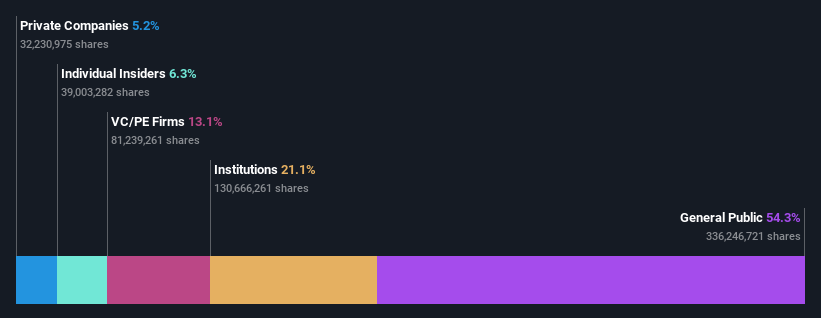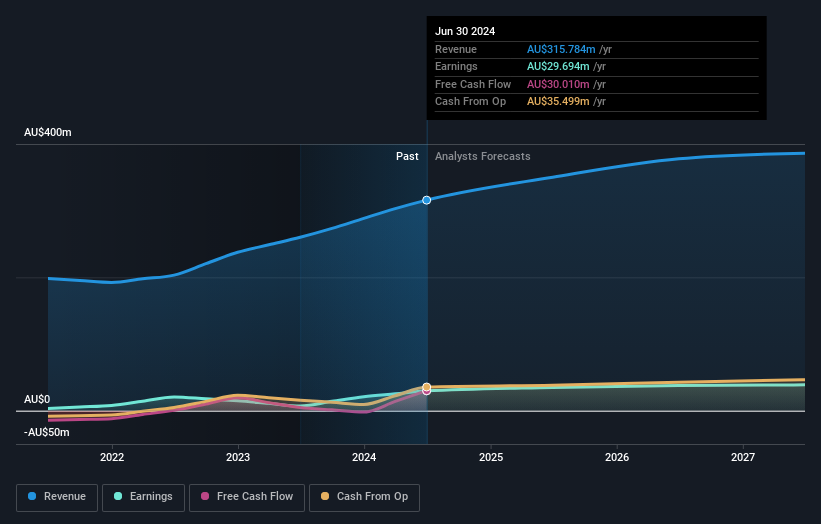Both retail investors who control a good portion of Austin Engineering Limited (ASX:ANG) along with institutions must be dismayed after last week's 13% decrease

Key Insights
- Significant control over Austin Engineering by retail investors implies that the general public has more power to influence management and governance-related decisions
- 46% of the business is held by the top 25 shareholders
- 21% of Austin Engineering is held by Institutions
To get a sense of who is truly in control of Austin Engineering Limited (ASX:ANG), it is important to understand the ownership structure of the business. We can see that retail investors own the lion's share in the company with 54% ownership. Put another way, the group faces the maximum upside potential (or downside risk).
Following a 13% decrease in the stock price last week, retail investors suffered the most losses, but institutions who own 21% stock also took a hit.
Let's delve deeper into each type of owner of Austin Engineering, beginning with the chart below.
See our latest analysis for Austin Engineering

What Does The Institutional Ownership Tell Us About Austin Engineering?
Many institutions measure their performance against an index that approximates the local market. So they usually pay more attention to companies that are included in major indices.
We can see that Austin Engineering does have institutional investors; and they hold a good portion of the company's stock. This can indicate that the company has a certain degree of credibility in the investment community. However, it is best to be wary of relying on the supposed validation that comes with institutional investors. They too, get it wrong sometimes. It is not uncommon to see a big share price drop if two large institutional investors try to sell out of a stock at the same time. So it is worth checking the past earnings trajectory of Austin Engineering, (below). Of course, keep in mind that there are other factors to consider, too.

We note that hedge funds don't have a meaningful investment in Austin Engineering. Looking at our data, we can see that the largest shareholder is Thorney Investment Group Australia Pty. Ltd. with 13% of shares outstanding. In comparison, the second and third largest shareholders hold about 7.3% and 6.2% of the stock. In addition, we found that David Patrick Singleton, the CEO has 5.3% of the shares allocated to their name.
On studying our ownership data, we found that 25 of the top shareholders collectively own less than 50% of the share register, implying that no single individual has a majority interest.
While it makes sense to study institutional ownership data for a company, it also makes sense to study analyst sentiments to know which way the wind is blowing. While there is some analyst coverage, the company is probably not widely covered. So it could gain more attention, down the track.
Insider Ownership Of Austin Engineering
The definition of company insiders can be subjective and does vary between jurisdictions. Our data reflects individual insiders, capturing board members at the very least. The company management answer to the board and the latter should represent the interests of shareholders. Notably, sometimes top-level managers are on the board themselves.
Most consider insider ownership a positive because it can indicate the board is well aligned with other shareholders. However, on some occasions too much power is concentrated within this group.
We can see that insiders own shares in Austin Engineering Limited. In their own names, insiders own AU$18m worth of stock in the AU$288m company. It is good to see some investment by insiders, but we usually like to see higher insider holdings. It might be worth checking if those insiders have been buying.
General Public Ownership
The general public -- including retail investors -- own 54% of Austin Engineering. This size of ownership gives investors from the general public some collective power. They can and probably do influence decisions on executive compensation, dividend policies and proposed business acquisitions.
Private Equity Ownership
With a stake of 13%, private equity firms could influence the Austin Engineering board. Some might like this, because private equity are sometimes activists who hold management accountable. But other times, private equity is selling out, having taking the company public.
Private Company Ownership
It seems that Private Companies own 5.2%, of the Austin Engineering stock. It's hard to draw any conclusions from this fact alone, so its worth looking into who owns those private companies. Sometimes insiders or other related parties have an interest in shares in a public company through a separate private company.
Next Steps:
While it is well worth considering the different groups that own a company, there are other factors that are even more important. Be aware that Austin Engineering is showing 2 warning signs in our investment analysis , you should know about...
Ultimately the future is most important. You can access this free report on analyst forecasts for the company.
NB: Figures in this article are calculated using data from the last twelve months, which refer to the 12-month period ending on the last date of the month the financial statement is dated. This may not be consistent with full year annual report figures.
New: Manage All Your Stock Portfolios in One Place
We've created the ultimate portfolio companion for stock investors, and it's free.
• Connect an unlimited number of Portfolios and see your total in one currency
• Be alerted to new Warning Signs or Risks via email or mobile
• Track the Fair Value of your stocks
Have feedback on this article? Concerned about the content? Get in touch with us directly. Alternatively, email editorial-team (at) simplywallst.com.
This article by Simply Wall St is general in nature. We provide commentary based on historical data and analyst forecasts only using an unbiased methodology and our articles are not intended to be financial advice. It does not constitute a recommendation to buy or sell any stock, and does not take account of your objectives, or your financial situation. We aim to bring you long-term focused analysis driven by fundamental data. Note that our analysis may not factor in the latest price-sensitive company announcements or qualitative material. Simply Wall St has no position in any stocks mentioned.
About ASX:ANG
Austin Engineering
Manufactures, repairs, overhauls, and supplies mining attachment products, and other related products and services for the industrial and resources-related business sectors.
Excellent balance sheet and good value.
Similar Companies
Market Insights
Community Narratives





